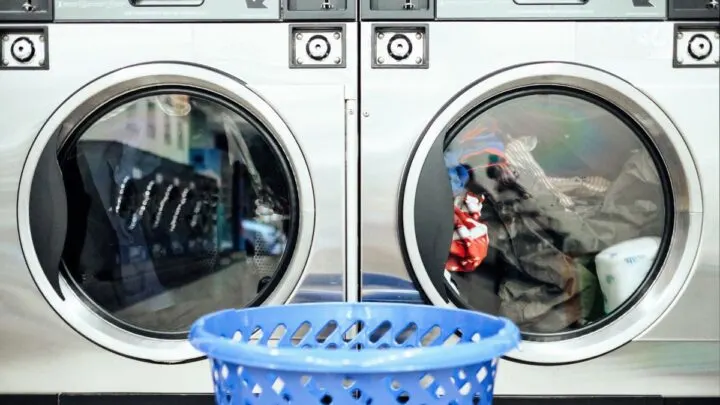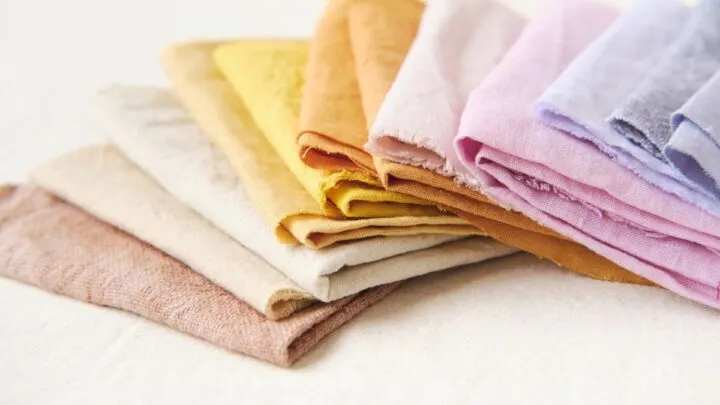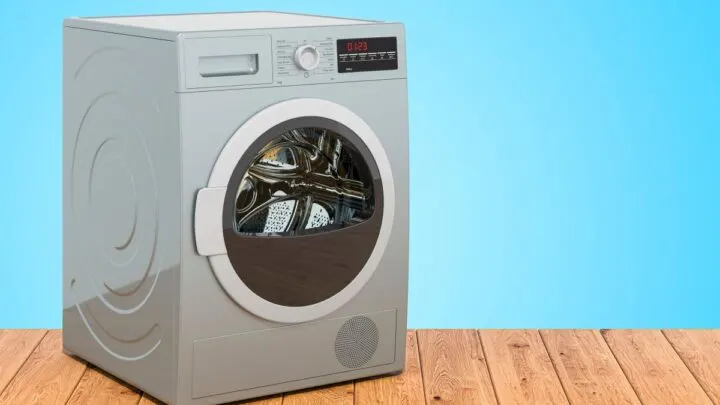Waiting for your clothes to dry tests your patience, especially if you are running late.
Opening the dryer and finding your clothes still damp is an annoying feeling, which is why knowing how long a dryer usually takes sets the right expectations.
Moreover, if the dryer takes significantly longer than expected, the average drying time helps you identify that there may be a problem.
A perfectly functioning dryer averages about 30 to 45 minutes of drying time, whether it is home-based or in a commercial laundromat.
However, even a single shirt should take you about 10 to 20 minutes to dry, with synthetic shirts taking longer to dry than cotton ones.
The time just feels longer in a laundromat because you have nothing else to occupy yourself with.
Numerous factors determine how long each particular load and every model takes to dry, ranging from 20 minutes to 1 hour.

Factors Affecting Drying Time
Load Size
As expected, a higher number of clothes will take longer to dry than a smaller number.
If you are in a hurry, popping that one shirt in the dryer will be quicker than loading an entire load of laundry in the first place.
A heavy load full of towels and quilts may need 70 to 90 minutes, whereas a light one full of cotton clothes may be done in 25 to 30 minutes.
Besides the longer drying time, a heavy load is also inefficient. When overloaded, your clothes may roll up into a huddle in which only the outer clothes are dried.
This, in turn, prolongs the drying time since you will have to put the damp ones back into the dryer.
The key is to strike a balance between a number of clothes that has enough room for hot air to circulate but is not so low that you have to spend your entire day before the dryer.

Fabric
What you’re drying is an important consideration when it comes to how long it will take to dry.
Fabric type, thread count, and thickness all affect drying time, such that denser fabrics like thick bath towels and quilts may take as long as 60 minutes to dry.
A bath towel needs around 25-35 minutes, whereas cotton clothes are done in 30 minutes.
Delicates like undergarments and lingerie dry in only 15 to 20 minutes.
While cotton is a rapidly drying fabric, wool is extremely slow. Synthetic fibers’ drying time depends on the garment’s thickness but it is always less than wool.
Initial Dampness
The drying time is also dictated by how wet the clothes were in the first place. This is controlled by the washing machine’s drain speed.
A low drain cycle means your clothes will be damp when they leave the washer to enter the dryer, thereby taking longer to dry.
Dryer Settings
Each dryer does not work with a standardized spin rate, air temperature, and other such variables.
While more details about these can be found in the manual that came with the dryer, toggling these settings, especially the heat ones, can notably affect the drying time.
The hotter the air, the faster your clothes will dry, but not all types of fabrics are compatible with high temperatures, meaning you might risk shrinkage of your clothes.
This works because the warmer temperatures enhance the rate at which moisture evaporates from your fabrics.
Dryer Type
Higher-end dryers are more efficient at what they do than the low-budget ones, which is why brand and model have a huge role to play when it comes to drying time.
Most modern dryers have sensors that automatically determine when it is time to switch off the heat or halt the tumbling action.
Similarly, some dryers have vents while others have heat pumps, of which the latter takes longer to dry clothes.
Like a refrigerator-freezer takes longer to cool down, a washer-dryer combo also takes longer to dry since the moisture from the wash cycle is retained within the machine.
In a broader perspective, dryers may be electric or gas-based.
Electric dryers take longer because it takes a while to get the machine heated up and there is a cap on how hot it can get. The absence of an exit for hot air moisture, unlike a gas dryer, certainly does not help.
Dryer Maintenance
Like any other machinery, a dryer also requires a bit of upkeep so that its sensitive hardware does not wear off.
Lack of airflow due to lint buildup in the venting hose is one of the most common issues faced in a dryer.
Removing the metal or plastic box with the lint screen and cleaning it with a cleaning brush or a vacuum is an easy fix to this.
There may also be something else clogging up the venting pipe, meaning the clothes may continue to tumble in the drum without adequate heat, taking longer to dry.
Removing or moving the flexible hosing may clear up any problems, but professional dryer vent cleaning at least once every year should be something on every dryer owner’s diaries.
If your dryer is taking way longer than is normal, there is a possibility of a more technical problem, such as a broken heating element or a defective thermostat or sensor.
With a malfunctioning sensor, the dryer won’t know when to turn off, whereas a faulty heating element not only extends the drying time by 20 minutes but makes it impossible for the clothes to ever fully dry.
A dryer needs to be cleaned and vacuumed regularly with a special check on lint build-up to maintain its efficacy and drying time.

Speeding Up Drying Time
While it is up to the machine to decide how long it takes to dry your clothes, there is a lot you can do to accelerate this process.
Keeping the dryer vent clear and clean of lint should be your utmost priority so that you check it after every load.
Lint doesn’t only make life inconvenient by prolonging drying time, but its accumulation is a fire hazard.
Unplugging the dryer and disconnecting the vent hose to clean it with a vacuum or cleaning brush is something else you can do in terms of the dryer, and drying smaller loads at a time can help you from your end.
Shortening the dryer hose by getting rid of the extra length also speeds up drying time.
As for external interventions, adding a dry towel to your laundry can help as well, especially in cases of a small load such as a single shirt.
This towel will take up some of the moisture, quickening the drying.
Additionally, dryer balls that prevent the aggregation of clothes and keep them separate can also help.
The Bottom Line to Dryer Time
Although the average drying time is around 30 to 45 minutes, the exact time your load and model will take depends on the airflow.
This means a clear vent and hose in the machine, as well as a limited load size that allows the circulation of hot air.
It is important to keep your dryer in check because not only does a faster drying time make the process easier, but it is also energy-efficient and economical.
Faster dryers use less power, and thus their Combined Energy Factor (CEF) is higher.


